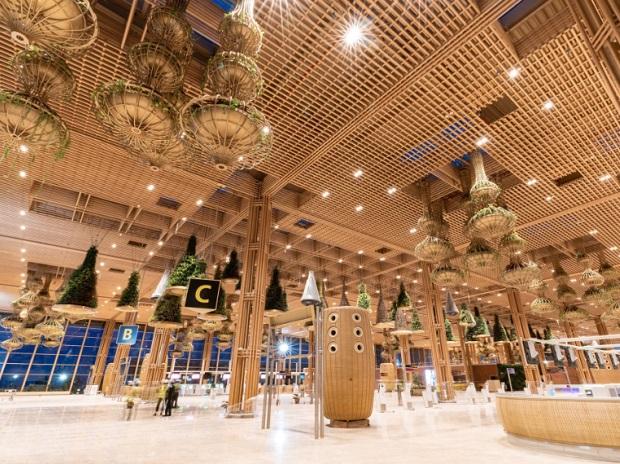[ad_1]
When Prime Minister Narendra Modi inaugurates Bengaluru Airport’s Terminal 2 today, the region’s busiest airport will join the ranks of Hamad International Airport in Doha and the Changi Airport in Singapore, which boast gardens and lush greens inside their terminals.
“Sustainability and wellness have been critical considerations at each stage of the design process,” said Skidmore, Owings & Merrill (SOM), the Chicago-headquartered architectural and urban planning firm that has designed Bengaluru airport’s new terminal. “The building’s extensive outdoor areas were designed in an effort to maximise wellness prior to the Covid-19 pandemic; today, the wisdom of integrating generous outdoor spaces into an airport terminal and transportation hub is even more evident.”
Built at a cost of around Rs 5,000 crore, the T2 will handle 25 million passengers annually. But the terminal’s signature piece is its green area and is being billed as a “terminal in a garden”.
Here are glimpses from Terminal 2 of the Kempegowda International Airport, Bengaluru. This will lead to capacity expansion of the airport and will boost commerce.
I am glad that the terminal building accords topmost importance to sustainability. @BLRAirport pic.twitter.com/9MxVyClhig
— Narendra Modi (@narendramodi) November 9, 2022
The terminal has an outdoor “forest belt” – a 24,000-square-metre landscape with indigenous flora, multilevel meandering paths, and two-storey pavilions that are clad in bamboo and inspired by traditional Indian cane weavings. The gardens will have distinctive plants including native specimen trees, flowering trees and shrubs.
The food and beverage areas will have scented plants, while the retail section will have lush green walls made of exotic creepers, hanging gardens and water cascades.
“The terminal, which will run entirely on renewable energy, will also capture, treat, and reuse rainwater from across the airport, and the indoor plantings and outdoor gardens are designed to only require the water that is harvested on site,” SOM said.
The terminal also employs extensive use of solar shading, intelligent building systems and renewable materials.
The architectural firm said T2 was designed with two primary goals: to achieve sustainability through structural efficiency; and economy through modularity.
“The result is one of the lightest terminal roofs in the world at this scale, made entirely out of domestically produced materials and built with local construction technology,” it said.
The terminal design will also allow for utmost flexibility to accommodate changes over time, SOM added.
Originally slated for commissioning last March, the terminal construction faced delays due to supply chain shortages arising from the Covid-19 pandemic. The construction faced cost overruns, too, and project management cost increased by around Rs 50 crore on account of extended period of construction.
[ad_2]
Source link



